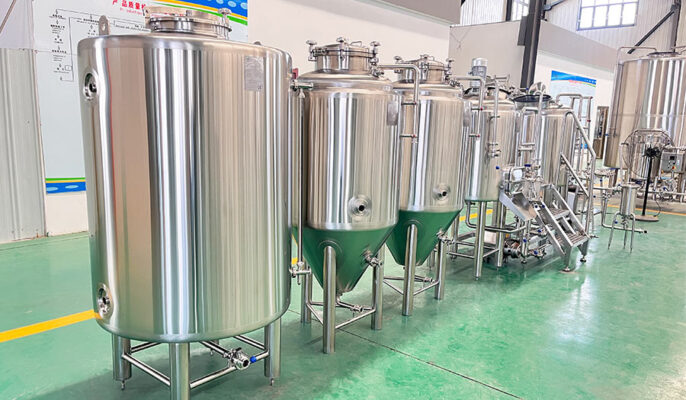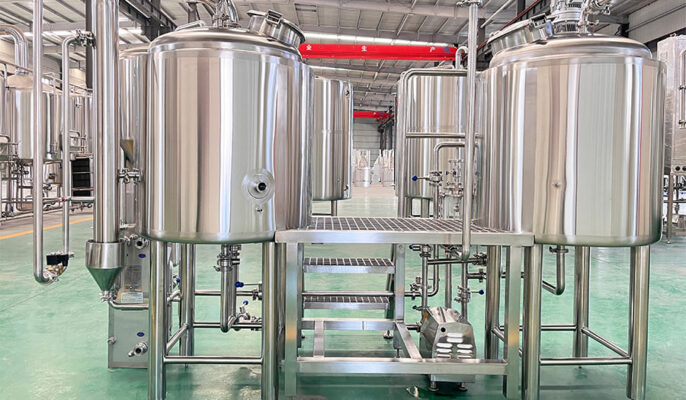When brewing beer at home, the right brewing equipment can make your process easier or better, whether you are a beginner or an experienced home brewer. A good set of home brewing equipment may cost more upfront, but you can save more in the long run because you don’t have to repeatedly replace cheap equipment or ruin a whole batch of beer brewed in the wrong type of container. The most important thing is that when you know how to choose the right home brewing equipment, you can brew better-tasting, clearer beer at any budget and any skill level.
What is home brewing?
Home brewing is the main way people get food and beverages. Malt, hops, yeast, and water are the main raw materials. Malt undergoes a mash process to produce sugar, which is then fermented by yeast to produce alcohol and carbon dioxide. Home brewing allows enthusiasts to adjust the type of malt, the amount of hops added and other factors according to their taste to make beer with a personal style.
What equipment do you need for home brewing?
Stainless steel mashing pot
This is the key equipment for saccharifying malt in beer brewing. The stainless steel mashing pot has good thermal conductivity and can evenly heat the mixture of malt and water. Its capacity should be selected according to the amount of beer brewed each time and generally has different specifications such as 10L-200L. Some stainless steel mashing pots have a thermometer interface, which can be easily inserted to monitor the mash temperature. At the same time, its bottom is usually flat or slightly curved, which is convenient for stirring the wort and preventing the pot from sticking.

Gärtank aus rostfreiem Stahl
Stainless steel fermentation tanks are more professional equipment than fermentation tanks. They are durable and have a long service life. Its material will not react chemically with beer and is easy to clean and disinfect. This fermentation tank can accurately control the fermentation temperature. Some high-end stainless steel fermentation tanks also have temperature control devices and sampling ports. There are many options for capacity, such as 30 liters, 50 liters, etc., which are suitable for home brewers with certain experience and high requirements for beer quality.
Stirring rod
The stirring rod is used to stir the fermentation materials during the fermentation process, so that the materials are evenly mixed, and the fermentation microorganisms are in full contact with the fermentation substances, thereby improving the fermentation efficiency. At the same time, stirring can also help dissipate heat and prevent the local temperature from being too high during the fermentation process, affecting the fermentation quality. During the fermentation process, the fermentation materials should be stirred with a stirring rod regularly as needed. When stirring, pay attention to the uniform force to avoid destroying the growth environment of the fermentation microorganisms. After stirring, the stirring rod should be cleaned and dried in time for use.
Trichter
Place the funnel on the mouth of the container that needs to receive the liquid, and then slowly tilt the container containing the liquid so that the liquid flows into the target container through the funnel. During use, pay attention to controlling the flow rate of the liquid to avoid excessive flow rate causing liquid overflow.
Funnels are available in many types, such as plastic funnels and stainless steel funnels. When choosing a funnel, pay attention to whether its caliber size matches the liquid container to be transferred, and at the same time ensure that the material of the funnel is safe, hygienic, and odorless.
Bottle cap or stopper
For fermentation processes that require gas exchange, you can choose a bottle cap or stopper with a one-way exhaust valve, which can ensure the seal while allowing the gas generated during the fermentation process to be discharged. For some fermented products that need to be preserved for a long time, such as wine, it is recommended to choose screw caps or corks with good quality and strong sealing. Well-sealed fermentation containers can also prevent external impurities and microorganisms from entering, ensuring the hygiene and quality of fermentation.
Other equipment
- Air pump: There are two types of air pumps: electric air pumps and manual air pumps. Electric air pumps are easy to use and efficient, but they need to be connected to a power supply. Manual air pumps do not require power and are suitable for use without power, but the operation is relatively laborious. When choosing an air pump, pay attention to whether its gas volume and pressure meet your own brewing needs.
- Yeast culture device: Yeast culture devices include simple culture bottles and complex professional culture equipment. For home brewing, choosing a simple culture bottle can meet basic needs. The culture bottle should have good sealing and air permeability to facilitate the growth and reproduction of yeast.

How to do home brewing?
Prepare brewing equipment
- Brühkessel
- Fermenter + airlock
- Funnel (optional)
- Desinfektionsmittel
- Automatic siphon
- Stirring spoon
- Beer recipe kit (or individual ingredients)
Sanitization
The taste of beer depends on whether the equipment is clean. Everything that comes in contact with the beer after boiling should be sanitized.
Bierbrauen
- Soak the grains. Pour 2.5 gallons of water into a 5-gallon brewing kettle. While the water is heating, soak the grains for 20 minutes, or until the water temperature reaches 170 degrees. When you remove the grains, let the water drip from the grain bag into the tank. Do not squeeze the grain bag, as you do not want to extract tannins, which may add unwanted flavors to the beer.
- Bring the kettle to a boil. Remove from heat and add the malt extract. Once the extract is dissolved, boil again. Hops will now be added at different intervals. Now you have wort. Cool the wort as quickly as possible.
Gärung
- Pour the cooled wort into the fermenter. Some brew kettles even come with valves to make it easy to transfer wort from the brew kettle to the fermenter.
- Fill with water to 5 gallons. Sprinkle the wort in the container to aerate the wort. Yeast needs oxygen, and sprinkling the wort will help.
- Add yeast. Dry yeast is easiest because it doesn’t require preparation. Sterilize the yeast bag with scissors, snip off a corner of the bag, and pour the yeast into the fermenter. Seal the fermenter, add a fermentation airlock, and store it in a cool, dark place. The beer should be kept at 68 degrees for proper fermentation.

Abfüllung
- Wash everything: bottles, fillers, bottle caps, bottling kegs, and any used transfer hoses. Use a bottle brush to clean bottles.
- Boil sugar in 16 ounces of water. Once cool, add directly to the bottling keg.
- Transfer beer. Pipette the beer out of the fermenter and into the bottling keg. Leave as much sediment as possible in the fermenter.
- Fill the bottles. Connect the filling bottles to the hoses, and connect the hoses to the bottling keg spigots. Open the bottling keg tap and push the filler to the bottom of the bottle.
- Put the caps and lids on the bottles.
- Leave the bottles at room temperature for about two weeks. This will give the beer time to carbonate.
Three methods of beer brewing
- Whole grain brewing When brewing with malt, it must be mashed, sparged, and boiled.
- Extract brewing is to buy malt extract in syrup or powder form and skip the saccharification stage. Simplifies the brewing day, but you must consider adding hops when boiling.
- Beer bags are a simple form of extract brewing, in which hop extract is added to malt syrup, so there is no need to boil.
Schlussfolgerung
Home brewing is a fun and challenging activity, and the right brewing equipment is the key to successful brewing. By understanding and choosing the various equipment mentioned above, you can move forward more smoothly on the road of home brewing and brewing your delicious beer and fermented food. At the same time, pay attention to the use and maintenance of the equipment, and keep the equipment clean and sanitary and in good performance, to ensure that every brewing can achieve satisfactory results.




